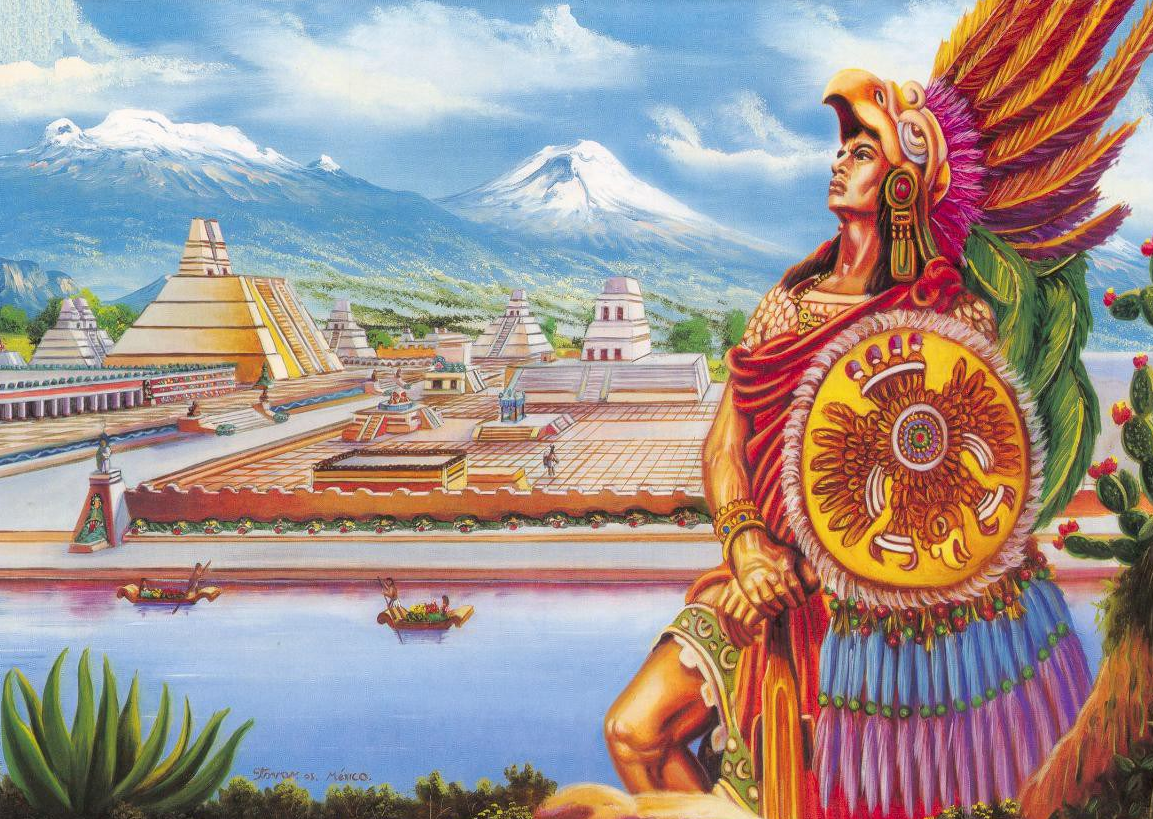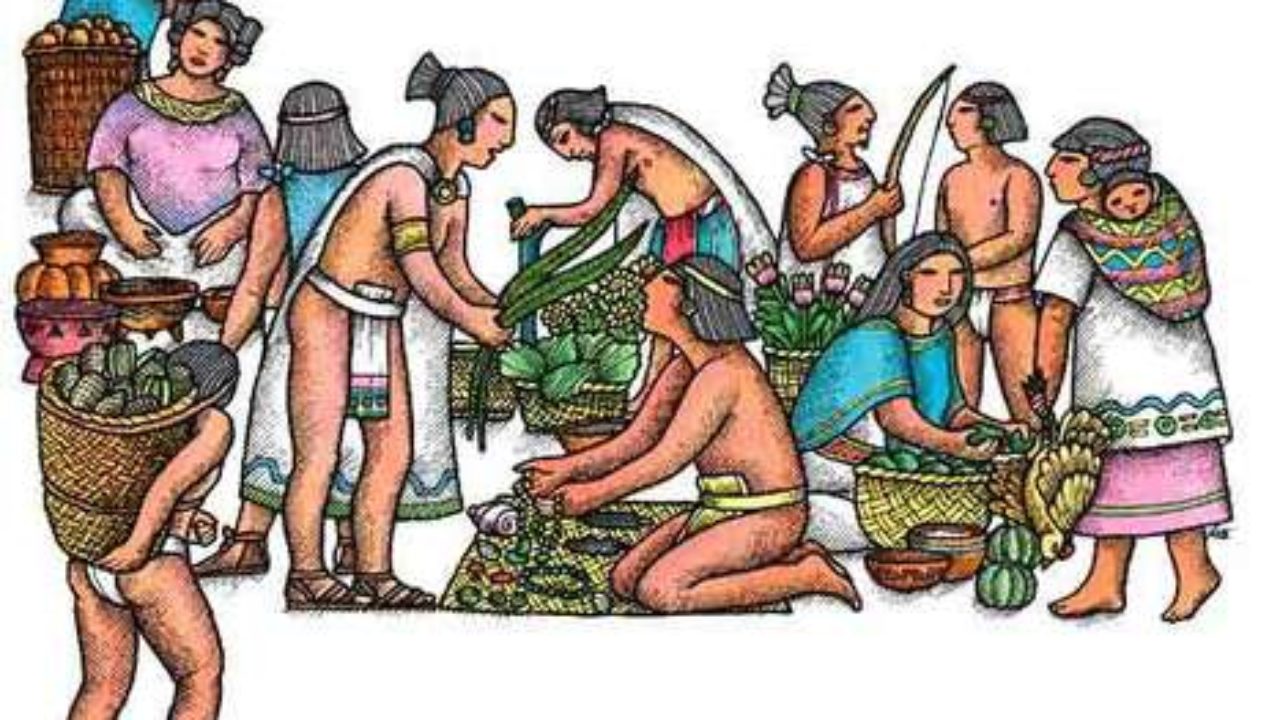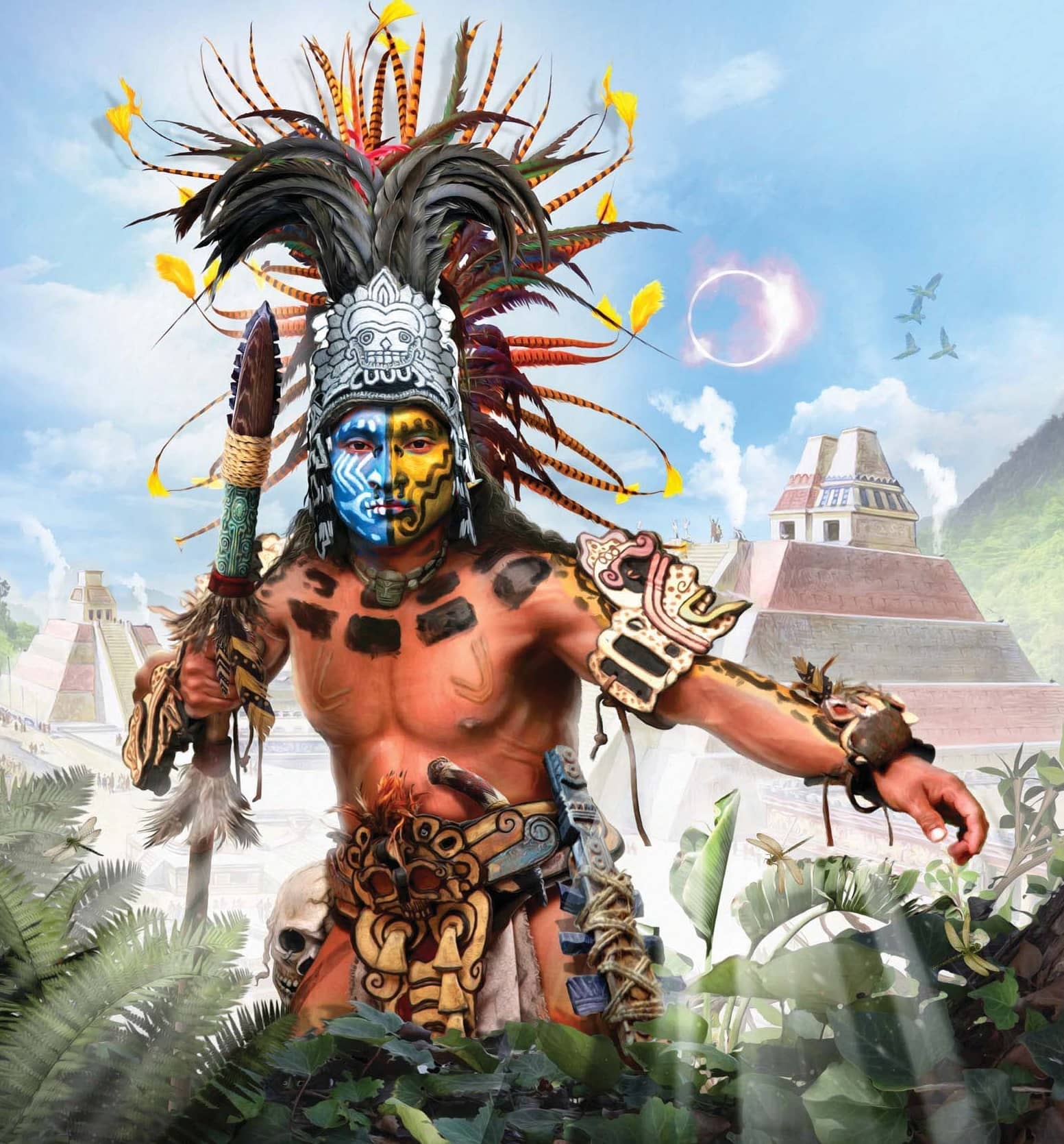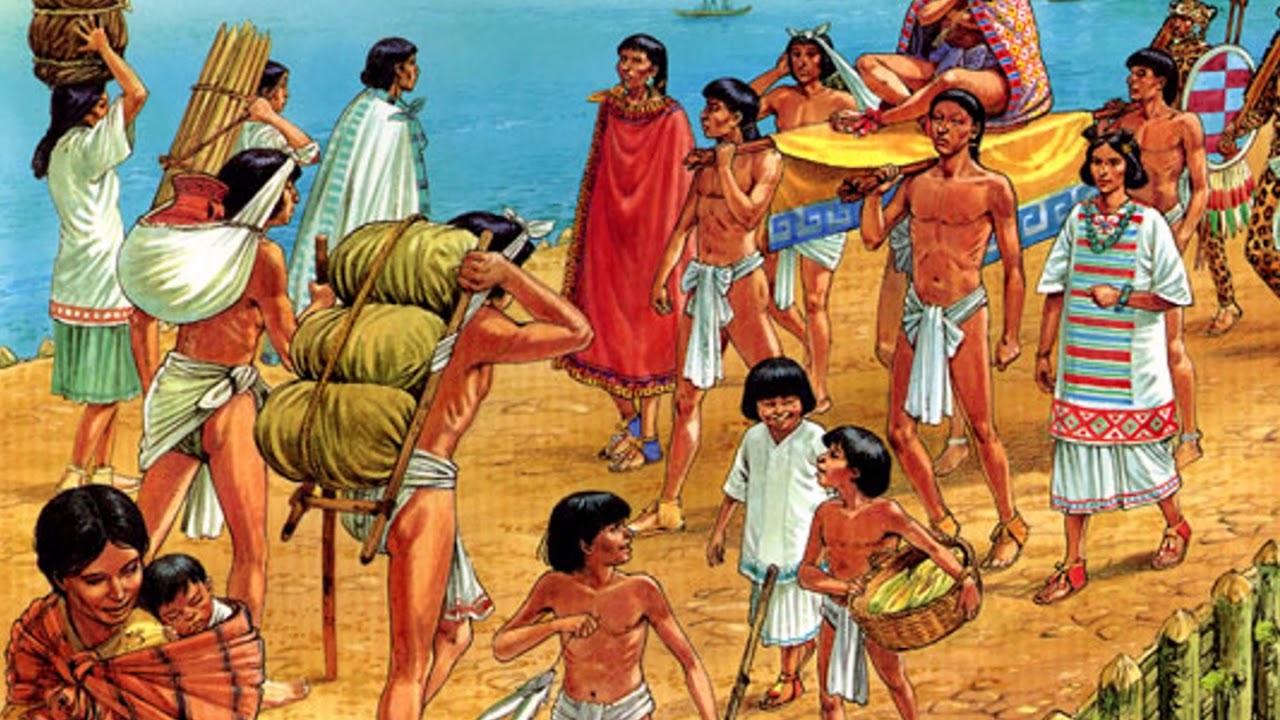In pre-Hispanic times, specifically in the central region of present-day Mexico, there was one of the most imposing and powerful cultures of the entire Mesoamerican territory, this was the Aztec Civilization. Through this article, we will detail its history, its development in different areas, its characteristics and more.

The Aztec Civilization
The Aztec or Mexica civilization was a Mesoamerican ethnic group whose ancestry is related to the Nahuas, these after a fairly long period of pilgrimage managed to get the place promised by the gods, and it is there that they laid the foundations of the famous and majestic city of Tenochtitlán (place which is today Mexico City) more or less in the year 1325, after establishing themselves they formed their imposing and powerful empire which was maintained until the coming of the Spanish colonizers to these lands.
Something very characteristic of Mesoamerican civilizations such as the Aztec, Olmec, Toltec and Teotihuacan is how advanced they were for their time. All of them, and especially the Aztec whose heyday lasted around 200 years (1325 - 1521 AD), left their mark in terms of development, evolution and territorial expansion. The significance of this culture was so great that even today a part of it exists and is maintained culturally and linguistically in some ethnic groups of Mexico.
This civilization imposed its dominance throughout the Mesoamerican cultural region for many years, until the beginning of the belligerence with the Spanish conquerors. And despite the fact that this town was overwhelmed and practically exterminated by the Spanish, eliminating almost everything from it, to later impose their mandate; The interest in the Aztec civilization was not lost, it is still alive, and this can be seen by the various studies that are still being carried out on this advanced culture and its contributions in terms of astronomy, architecture, material handling and more.
Meaning of the term Aztec
The Aztec civilization called themselves the Mexicas. However, after the end of this great society, the term Azteca was attributed to it, which is a word of Nahuatl origin that expresses "the people who arrived from Aztlán", this is the place of origin of this civilization which was an island mystic that even today its location is unknown, although some researchers and scholars suggest that this site is the same Tenochtitlán.
From
The Aztecs who left the city of Aztlán emigrated for many years to settle in Coatepec (Serpent in Nahuatl) near Tula. There the Aztecs built a city and lived for a few years. However, when the Aztecs were in this place, a discussion broke out with religious reasons where they discussed which of their gods to admire, so the faithful to Huitzilopochtli wanted to go to other lands and others who followed Coyolxuahqui wanted to stay in Coatepec.
During the lawsuit, the group that paid devotion to Huitzilopochtli obtained the recognition of more followers; It is there that he decides to change his name to Mexica and embark on his journey. Hence, the Mexica distance themselves from the others who stayed in Coatepec.
Now, the Mexicas led by Huitzilopochtli went to the place promised by the god that was towards the southern territory, in those spaces it was where they laid the foundations of the city of Tenochtitlan (place of the itchy cactus). The city was built in the middle of Lake Texcoco or the Valley of Mexico.
Geographic location
The territory covered by the Aztec civilization corresponds in the present to the entire central and southern region of Mexico, especially in the one that corresponds to the Basin of Mexico, which is located in the central highlands, which has a warm, cold and warm climate. damp. The current places that were dominated by this civilization are:
- The Valley of Mexico – Mexico City
- Veracruz
- Puebla
- Oaxaca
- Guerrero
- part of guatemala
Political organization
The Aztec civilization managed to build a powerful empire through political and warrior organizations that outnumbered other neighboring civilizations. The mode of administration was based on a monarchical and elective empire, therefore there was no charge that was transferable by inheritance.
Therefore, when an emperor died, a Supreme Council called Tlatocan was called, where the legatee was selected, usually the individuals who participated in this council belonged to the Aztec nobility, so it was normal that some of the members of that council will run for the throne.
After the election of the emperor who was called Tlatoani, he had the conception that his origin was divine and, therefore, he should have unlimited powers and attributions in Aztec society; under his command, he directed an entire bureaucratic network composed of:
- Cihuacóatl – High Priest
- Tlacochcálcatl – Chief of warriors
- Huitzncahuatlailotlac and Tizociahuácarl – Judges
- Tecutli – Tax Collectors
- local rulers
- Calpullec – Chief of the calpulli
Although the Aztecs established a totalitarian empire, this in turn was structured by city-states with local rulers, who were also elected by the same superior council that was in charge of selecting the supreme chief, whose task was to maintain control of these small cities. cities in order to successfully ensure the stranglehold of the empire.
Social organization
Aztec society was ordered and divided into different social castes in a disciplined manner, below they are detailed:
- The nobility, which made up the same royal family, the chiefs of the warriors and the chiefs of the various city-states.
- Tlatoque and the priests.
- Traders and merchants.
- Artisans and farmers.
- The lowest social caste made up of the tlacotin, who were slaves, captives, exiles and prisoners.
Education
The Aztecs had an educational model that was applicable through two forms, the first was based on compulsory education for all and the second functioned as a school with two formal teaching modalities, which are specified below:
- First: Parents had to obligatorily teach young children up to 14 years old the proverb of the elders Huëhuetlátolli, which basically contained the Aztec ideology and belief; in this activity the Calpulli authorities were present to verify its compliance.
- Second: There were two modes of study through attendance at schools that taught diverse and different courses, among them: Telpochcalli, where practical and military subjects were taught; and Quietecác for instruction in writing, religion, astronomy, and leadership.
Economy
The economy of the Aztec civilization was made up of different activities which sustained this great empire, motivated by the fact that its derivatives and final products not only served as sustenance but were also commercialized with neighboring civilizations. Among the most outstanding activities are the following:
- Agriculture, this was the main pillar of its entire economy. The Aztecs developed in this activity primarily cultivating corn, chili and beans.
- Hunting and fishing.
- Mining to obtain precious and semi-precious stones, basalt and other minerals.
- The collection of taxes, both to slaves, peasants for the work of the land and to the dominated enemy towns.
religionion
Polytheism was markedly in their religion, so their belief and worship of various gods was common. Likewise, they used to resort to animal and human sacrifice rites because they had the idea that blood was an important element for the gods because it was their food; so while they fed the gods, the gods would repay him by helping them survive. Among the sacrifices stands out:
- Cordectomy – manducation: which consists of placing the offering on a stone, extracting its heart with a knife to later eat it.
To carry out these sacrifices, the so-called flower wars were carried out, in which prisoners were taken out and sacrifices were made with them.
Most of the gods that made up the Aztec pantheon were associated with the heavenly bodies of the universe and in turn also with some element of nature. Among the most important gods are presented:
- The god of the sun and war, his maximum god Huitzilopochtli
- The rain god, Tlaloc
- The feathered serpent, Quetzalcoatl
- The mother goddess, Coatlicue
Astronomy
The Aztecs had great admiration for the firmament and the celestial bodies found in this space, especially the Sun, the Moon and Venus; In addition, these are related to their mythology. Due to the constant observation of the sky, they were able to recognize and distinguish various constellations such as the Pleiades and the Great Bear, and used these to establish the calculation of their time cycles. In relation to the stars, they were divided into two opposing groups, these are:
- The 400 cloud serpents of the north, Centzon Mimixcoa.
- The 400 surrounded by thorns to the south, Centzon Huitznáhuac.
Language
Nahuatl belongs to the Uto-Aztec family, one of the largest branches of the Native American language. This was also the language practiced by the people of the Aztec Empire. Although the spoken and written form of the language has changed significantly since the classical pre-Hispanic form, Nahuatl lasted half a millennium and has still been maintained among some Mexican ethnic groups.
Architecture
Architecture was an elementary piece of Aztec erudition, since through it they manifested both their beliefs and their values. So this civilization through the foundation of structures sought to demonstrate their sumptuousness, power and connection with their gods; so their buildings were totally symmetrical and denoted order.
Additionally, in their constructions they innovated this activity using new materials and styles; their way of building was characterized by ingenuity and adaptation, for which they had completely artistic, comfortable and spacious places that also had an important meaning for their culture and religion.
Customs
Like any culture, the Aztecs managed to have within their individual and group daily life a compendium of customs and traditions of great importance to them. Some of their customs are as follows:
- Schooling, as mentioned above, was mandatory for children to receive an education from a very young age.
- Militarization, being a belligerent people, it was very common for the entire civilization to receive martial training from childhood.
- Women and the home, this society was patriarchal, so the women had to stay at home doing domestic activities, while the man was in charge of carrying out external and commercial work.
- The importance of religion: the Aztecs had a great connection with their religion, so among their customs the practice of various rituals and prayers to be close to their gods is common; so much so, that in the houses they dedicated a special space dedicated to their religion.
- Fasting, fasting was essential for this society so it was practiced by the entire civilization, including the emperors.
- The sacrifices, the Aztecs made sacrifices where they included humans that were offered to the gods.
If you found this article on the Characteristics of the Aztec Civilization interesting, we invite you to enjoy these other links that will surely be of interest to you:


